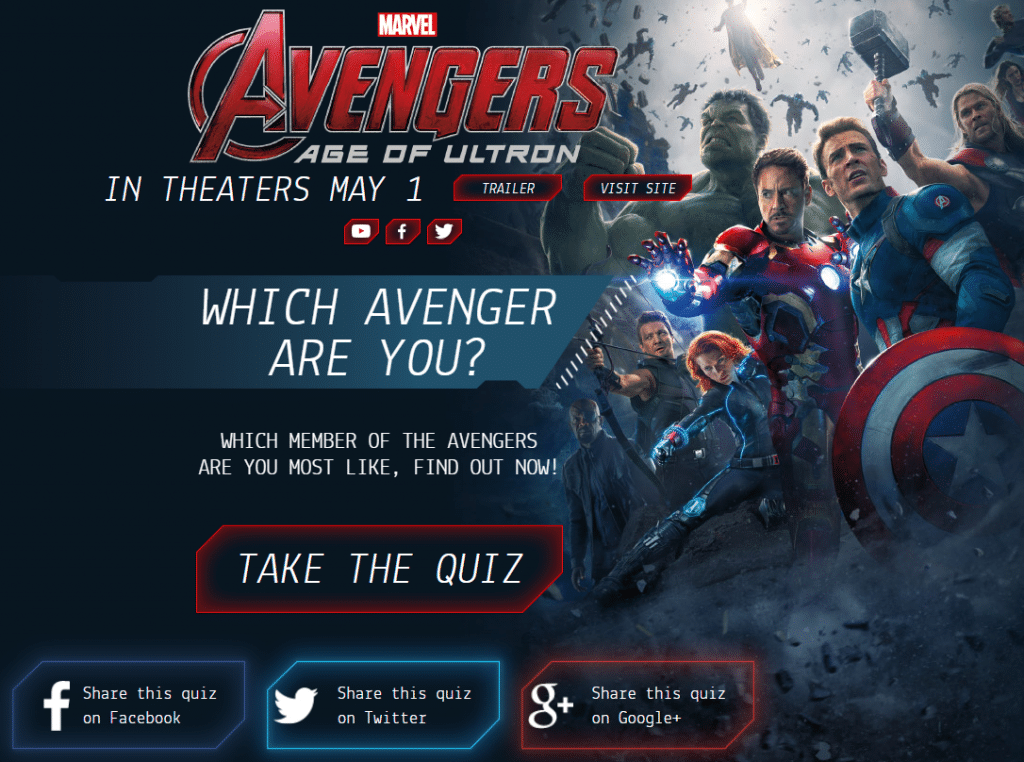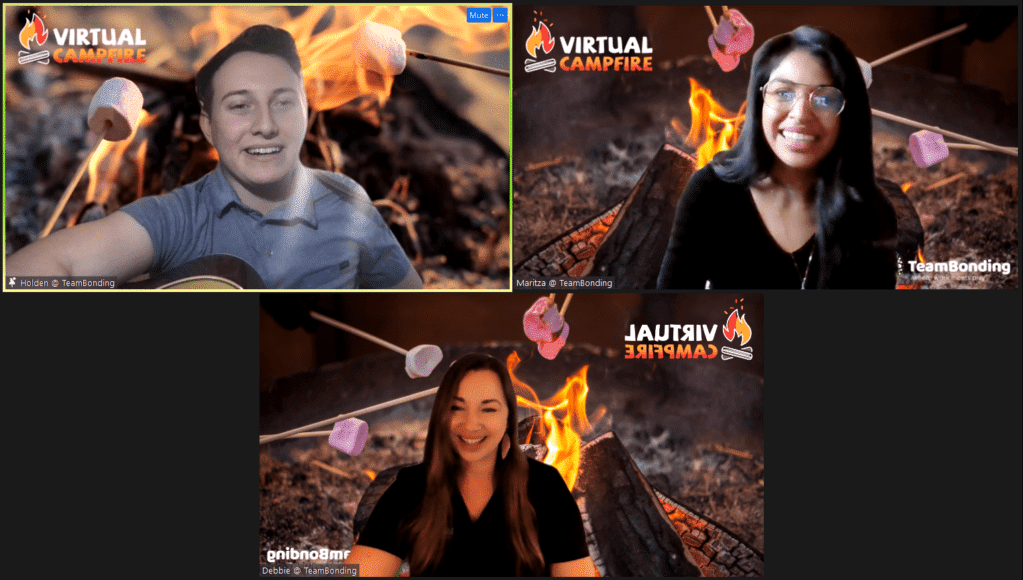It’s safe to say that today’s consumers are inundated with advertising everywhere they go.
From social media ads to pop-ups on streaming television, there is always someone competing for their attention.
That means it is more important than ever for companies to stand out from the crowd.
The easiest way to accomplish this? With an interactive brand experience.
It can offer audiences a unique way to learn about a particular company or subject while actively taking part in an activity.
Typically, brand experiences can range from offline interactions to online interactive content, like quizzes, lookbooks, guides, or downloads.
Here’s what you need to know about building an interactive brand experience for your customers and why doing so is very important.
What is An Interactive Brand Experience?
In the branding universe, an interactive brand experience is anything that takes basic content promotion and delivers it in a manner that gives the target customer an activity to participate in.
This can be something as simple as a skincare quiz to find out which beauty product is right for the buyer persona’s needs or a virtual party where participants get to interact with other fans.
Even special downloadable content or app-based loyalty punch cards are all considered an interactive brand experience.
The key point?
Interactive brand experiences get your customers to take action in something, versus passively accessing information.
The Advantages of Interactive Brand Experiences
There are quite a few advantages to using interactive brand experiences as part of a wider digital marketing strategy.
It makes it easier to stand out from your competition
Especially if you’re in a crowded niche.
Not everyone is doing these kinds of experiences yet, which means you’ll be able to really attract the attention of your ideal customer in a shorter period of time.
It gives you a reason to do a value trade with your potential customer or lead
In exchange for signing up to your email list, they receive access to this special one-of-a-kind offer.
This can be an excellent way to grow your digital advertising and expand into email marketing.
It is just plain fun!
Who doesn’t want to be known as the brand that makes things interactive and different from all the other companies on the market?
Interactive brand experiences are a blast for your team to create and even more exciting for your audience.
6 Steps to Creating an Interactive Brand Experience
Now that you know what an interactive brand experience is and why you need to create one, let’s go into the process of actually putting one together.
From the moment you decide to create a brand experience, your team needs to be ready to bring their best work.
This is a time to really think outside the box and ensure the finished product shines.
And, yes, the creatives in your group are going to love the process.
Here are a few tips on how to make that happen and the steps necessary for success.
1. Brainstorm ideas for your target market
The very beginning of creating an interactive brand experience starts with looking at your target market.
Think about things your personas would love to see, events they would love to attend, or what really gets to their core goals.
Maybe your brand tends to cater to busy working moms. In that scenario, you probably would want to create something they can do on the go or from a smartphone app.
But if your target market is B2B sales reps that travel around the country, your brand experience might be something in-person at a trade show.
Think about the various ways you can get in front of your ideal audience and think of at least a dozen different ideas that might work before narrowing it down to one.
2. Decide on a media type
The second step in the process of building an interactive brand experience is deciding on a media type.
Again, this really comes down to your target market and what resonates well with their lifestyle.
Examples of options you could try include:
- Online quizzes.
- Sales lookbooks.
- An in-app loyalty card.
- Flipbooks.
- Downloadable eBooks.
- Virtual meetings or concerts.
- Interactive classes.
- Exhibit walls at local events.
See the underlying factor here?
All of these items include a way for someone to take part in the experience and not just passively read written copy or watch a video.
3. Design your interactive experience
Now that you’ve come up with an idea that resonates with your target audience and decided how you will get in front of them, it is time to actually design the interactive experience.
If you’re doing something in-person, then you’ll want to work with an events company that specializes in signage, exhibit walls, and whatever else necessary to pull off your idea.
However, if your interactive brand experience is entirely digital, then there are plenty of do-it-yourself tools your team can try out.
Our favorite? Ion Interactive, of course.
But we’ve also included a list of twelve total in a blog post covering the best interactive content tools.
4. Test it out
Before fully engaging in a digital marketing campaign for your interactive brand experience, test it out on a small group of people first.
This will give you the right feedback about where you might need to make changes.
For example, let’s say you’ve decided to create a quiz as part of your experience.
A group of fifty beta testers tries it out in exchange for a discount coupon code for your eCommerce store.
They try it out, but data shows most people abandon it after only completing eight of the twelve questions.
You could then use surveys or ask additional questions to find out why this is happening. Maybe it is something technical or perhaps twelve questions is simply too long.
Why is testing so important?
You’re devoting a lot of time and budget into making your interactive brand experience be the best it can be.
If there are issues keeping your target user from fully enjoying it, then you want to know that before you do a huge push to bring in traffic.
5. Release your interactive experience
Once you’ve had an opportunity to work out the finer details, it is finally time to release your interactive content.
And that’s when the real work begins in driving traffic to it.
If your interactive brand experience is in-person — say at a trade show or convention — make sure you send out emails to your list and make contact with existing customers to ensure they know you’re going to be there.
For brand experiences that happen at a certain date or time, give yourself plenty of time to lead up to the event and still remind participants that the big day is coming up.
Email marketing is great for this, as you can set automated messages a few days to a few minutes before kickoff time to achieve better overall attendance.
Finally, an evergreen interactive brand experience can see a huge surge in traffic with social media marketing, influencer marketing, paid advertising, and more.
6. Get feedback from participants
Finally, you want to know what your customers thought about the interactive brand experience.
Remember to add a feedback form or send out an automated survey once someone has participated.
This will give your team excellent insight into what they thought of your creation and how they feel about your brand after taking part.
It can also be a good way to get testimonials to use in future marketing or elsewhere in your digital advertising strategy.
Again, the more value you can provide with this offer, the more likely someone will be willing to take part.
In some cases, this might mean providing an extra perk or discount for filling out the survey at the end.
Best Examples of Interactive Brand Experiences
Part of creating your own stellar interactive brand experience includes seeing what other companies have done in the past.
While we always stress adding your own unique spin, scoping out the competition can be a great way to see what’s already out there and the many things that are possible.
The brand experiences we’ve chosen for this list are our favorites for several reasons.
However, they all do something that you should strive to do with your own creation, which is get people talking about your brand.
Gatorade
You might not think of a sports drink company as an innovator when it comes to interactive brand experiences.
However, Gatorade was able to come up with a unique in-person event with stations that tailored information to each user’s needs based on RFID tags.
The end result?
A fully enjoyable experience for participants that provided tons of marketing data back to the company.
The roadshow traveled around multiple cities throughout the country, providing information from consumers in various regions.
Marvel

To coincide with the launch of a new Avengers release, the team at Marvel created an interactive quiz to help moviegoers decide which one of the characters they best relate to.
After fourteen questions, users are given a tally and the option to share the results on social media.
The end result of this interactive experience?
A way to get people talking on social media. When one person shares they are like Captain America or Thor, their friends and family are more likely to do the same.
In turn, this creates a ton of buzz for the movie.
Team Bonding

In a time where Zoom meetings can get tedious and boring, we love this idea from a company called Team Bonding.
It is an interactive campout where participants are sent a s’mores kit beforehand and take part virtually in an online campfire session.
There’s music, games, and a fun time for all.
How could this work as a brand experience?
If your business involves B2B, you could create a training around a similar event where participants sign up to gain access.
It’s definitely creative and fun enough to catch the attention of your customers.
Wrap Up: Using Interactive Content in your Strategy
As you can see, interactive content is an excellent way to attract new customers and give them something to talk about.
If your business isn’t already engaging in this type of marketing, now is the perfect time to start brainstorming possible options for your next campaign.
Of course, our team at Rock Content would love to help you make that happen.
We’ve created a guide with info on getting started with interactive content, including a few handy tips and tools to make the process easier. Check it out!
Start creating interactive content with Ion and increase your marketing results!
Start creating interactive content with Ion and increase your marketing results!
![What is an Interactive Brand Experience? [+ How to Create One]](https://rockcontent.com/wp-content/uploads/2021/08/interactive-brand-experience-1024x538.png)








